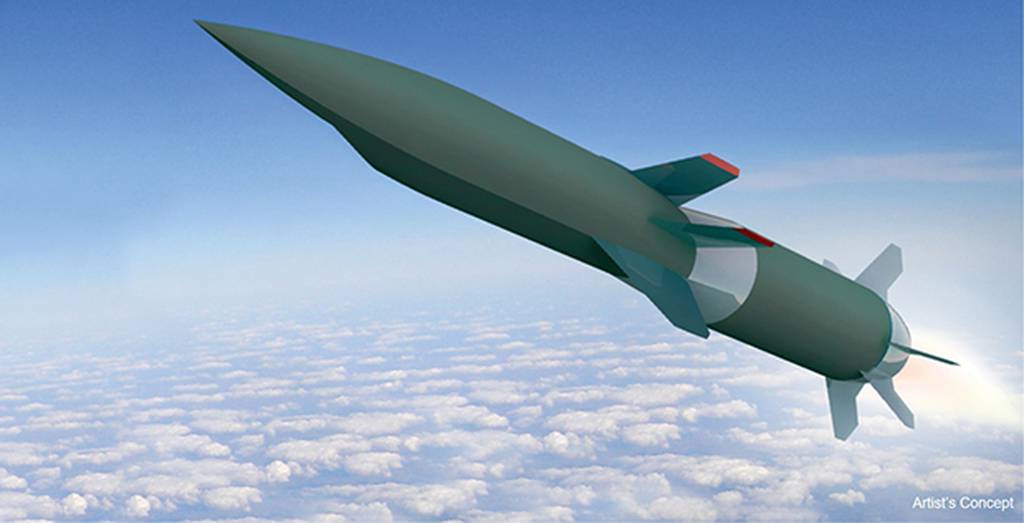| From parts to hypersonics, Pentagon sees 3D printing as ‘game changer’
从零件到高超音速飞行技术,五角大楼将3D打印视为“游戏规则的改变者” Date:2023-10-03 Source:defensenews By:Stephen Losey Viewed: |
By Stephen Losey
Sep 28
作者:斯蒂芬·洛西
2003年9月28日
The Pentagon said 3D printing can better allow hypersonic manufacturers to create scramjet components requiring complex shapes. The Air Force and DARPA's Hypersonic Air-breathing Weapon Concept, or HAWC, is an example of a scramjet hypersonic weapon. (DARPA)
五角大楼表示,3D打印可以更好地让高超音速制造商制造出需要复杂形状的超燃冲压发动机部件。美国空军和美国国防部高级研究计划局(DARPA)的高超音速吸气式武器概念(HAWC)就是超燃冲压发动机高超音速武器的一个例子。(DARPA)
WASHINGTON — The growth of additive manufacturing is a “game changer” for the military — one that can facilitate everything from creation of parts for systems to accelerating the development of hypersonic weapons, a top Defense Department official said Wednesday.
华盛顿——美国国防部一名高级官员周三表示,增材制造业的发展是军队的“游戏规则改变者”,它可以促进从系统零部件的制造到加速高超音速武器的开发等方方面面。
Keith DeVries, deputy director of the Office of the Secretary of Defense’s Manufacturing Technology Program, said in a Defense News webcast Wednesday that additive manufacturing has made great strides in the last few years and opened up novel possibilities for creating new weapons and components.
国防部长制造技术项目办公室副主任基思·德弗里斯周三在《国防新闻》网络直播中表示,增材制造在过去几年中取得了长足进步,为制造新武器和部件开辟了新的可能性。
Additive manufacturing has particularly come in handy when designing new systems, DeVries said, allowing programs to quickly create complex components than traditional manufacturing processes would allow.
德弗里斯说,增材制造在设计新系统时特别有用,它使程序能够比传统制造工艺更快地创建复杂的组件。
Additive manufacturing has advanced since its early days, when it made objects from more fragile polymers to materials with higher tensile strength. Today, DeVries said, these manufacturing techniques create objects from high-entropy metals that are particularly strong and stand up to wear and tear, using lasers to melt metals that can withstand high temperatures and allowing more complex shapes to be crafted.
增材制造从早期就取得了进步,当时它制造的物体从更脆弱的聚合物到抗拉强度更高的材料。德弗里斯说,如今,这些制造技术用高熵金属制造出特别坚固、经得起磨损的物体,使用激光熔化能够承受高温的金属,并可以制造出更复杂的形状。
“Those advancements have been fundamental unto themselves,” DeVries said. “Now, it feels like we’re turning a corner and we’re trying to find what the sweet spot is for how big of a build volume is appropriate for us to apply that technology.”
“这些进步对其本身就是根本性的,”德弗里斯说。“现在,感觉我们要转弯了,我们正在努力寻找适合我们应用这项技术的最佳位置。”
And hypersonic weapons are a prominent example of a program where additive manufacturing can be useful.
高超音速武器是增材制造有用项目的一个突出例子。
Scramjet propulsion systems that are central to some hypersonics, for example, require complex chambers that can be difficult to make, DeVries said. But 3D printing these components is allowing hypersonic weapons manufacturers “some fantastic capabilities,” he said.
德弗里斯说,例如,作为某些高超音速飞行技术核心的超燃冲压喷气推进系统,需要复杂的燃烧室,这可能很难制造。但3D打印这些部件为高超音速武器制造商提供了“一些神奇的能力”,他说。
Additive manufacturing would allow scramjet components to be made from high-temperature metals in a way that eliminates the need to have complex welds or brazing joints, DeVries said. Those joints need to be tested to ensure they’re sound, he said, but a component made via additive manufacturing that doesn’t have those joints won’t need such testing.
德弗里斯说,增材制造将使超燃冲压发动机部件能够由高温金属制成,从而无需复杂的焊接或钎焊接头。他说,这些接头需要进行测试,以确保它们是完好的,但通过增材制造制造的没有这些接头的部件不需要这样的测试。
“Being able to incorporate additive manufacturing is enabling us to manufacture complexity that has not been able under the subtractive, traditional manufacturing methods,” DeVries said. He noted hypersonic development is still in the rapid prototyping phase.
德弗里斯说:“能够融入增材制造使我们能够制造出传统减法制造方法所无法制造的复杂性。”他指出,高超音速的开发仍处于快速原型阶段。
But DeVries said traditional manufacturing techniques such as casting and forging still have a place, and warned the DoD and manufacturers should only seek to replace those techniques with additive manufacturing “in a very intentional and frankly limited way.”
但是德弗里斯说,铸造和锻造等传统制造技术仍然有一席之地,并警告国防部和制造商应该只寻求“以非常有意且坦率地说是有限的方式”用增材制造来替代这些技术。
“We want to treat [additive manufacturing] as a tool in the toolkit, and we want to apply it exactly where it’s necessary, and where it adds the most value,” DeVries said.
德弗里斯说:“我们希望将(增材制造)视为工具包中的一个工具,我们希望将其准确地应用于必要的地方,以及它能增加最大价值的地方。”
上一篇:Chinese defense firms show off counter-drone tech at Serbia arms show 下一篇:Where is Russia’s S-500 air defense system
| The Booker dilemma: inside US Army transformation
“布克”困境:美国陆军转型内幕 |
| The decision to cancel the M10 Booker light tank is at the core of a reordering of US Army planning.... [2025-07-16] |
| Focus: A fragile balance in Asia, China has become leading military power in the
焦点:亚洲平衡脆弱,中国已成为该地区的主要军事力量 |
| However, China's rapid military growth in this area is tipping the balance in favor of regional power. ... [2024-08-27] |
| Small drones will soon lose combat advantage, French Army chief says
法国陆军总司令表示,小型无人机将很快失去战斗优势 |
| By Rudy Ruitenberg Thursday, Jun 20, 2024 作者:鲁迪瑞滕伯格 2024年6月20日星期四 French Army Chief of Staff Gen. Pierre Schill inspecting a Rapid Eagle anti-drone system at the Eurosatory defense show in Paris on June 19, 202... [2024-08-18] |
| What’s next for Ukraine’s incursion into Russia?
乌克兰入侵俄罗斯的下一步是什么? |
| Ukraine’s forces have surprised us all with its recent incursion into Russia’s Kursk Oblast since the operation to turn the tide of the war,... [2024-08-17] |

